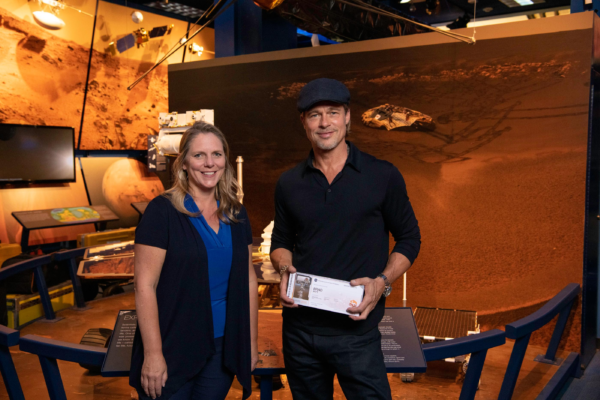Brad Pitt with scientist Jennifer Trosper at NASA’s Jet Propulsion Laboratory in Pasadena. (Courtesy/ NASA/JPL-Caltech )
Ad Astra is the slow burn of slow burns. It’s a wrenching story of a son chasing after his long lost father and explores humanity and the harsh reality of space travel, paired with gorgeous cinematography. The only problem, however, is that this beautiful, intimate narrative is just too slow.
Brad Pitt (Roy McBride) delivers a hauntingly good performance as the prestigious astronaut-his facial cues alone were powerful enough to carry the story. Sadly, close-up shots of his face are half of this 2-hour long movie, and Pitt’s voice narrates throughout. The other characters do a good job, particularly Tommy Lee Jones as Roy’s long-lost father, Clifford McBride, but Ad Astra remains very much a Bradd Pitt movie, with the supporting cast receiving little screentime.
A mayday scene from about halfway through the movie seemed like it came straight out of a horror movie. Pitt’s acting, yet again, steals the show as every aspect of his performance is raw enough that Roy McBride’s anxieties can truly be relatable despite his being a hotshot astronaut.
Where the movie truly shines is how it looks. With vistas that parallel Interstellar, director James Gray creates spectacular views of space. Just like Brad Pitt’s excellent performance, however, the scenes just drag on. The movie starts with a 30-second lens flare and that time-crawl of a scene represents the film: too much of a good thing.
Ad Astra is not an action-packed thriller like the trailers made it out to be. Instead, it’s an intense exploration of human relationships, routinely interlaced with many shots of space. If that’s what you want to see, then it’s a great film. But if you want something a little more exciting, Ad Astra might have you struggling to stay awake.








